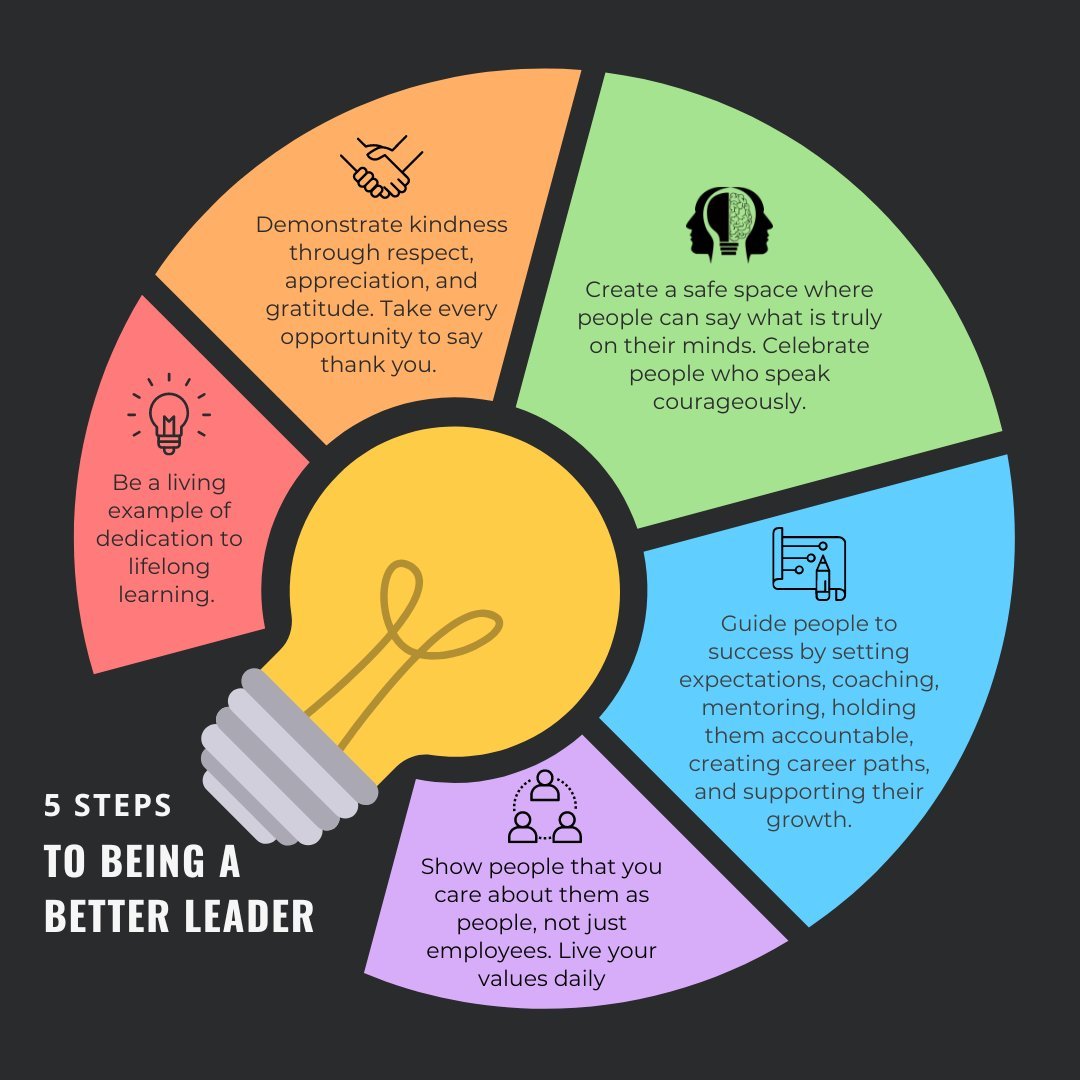I recently attended a leadership lecture at Copenhagen University, and said, "You cannot have imagination free decision making" as it suggests that decision-making and imagination are not independent of each other. I think imagination often plays a role in decision-making, as it allows individuals to envision different scenarios, possibilities, and outcomes related to a decision. However, it's important to note that while imagination can influence decision-making, individuals still have the capacity to make decisions that are not solely dictated by their imagination. The lecturer pushed back with “Decision-making can also be guided by rationality, logic, past experiences, and external factors, depending on the context and the specific decision at hand. So, while imagination can be a valuable tool in the decision-making process, it does not necessarily restrict or eliminate the possibility of free decision-making.” I guess we were both right…
Taking risks
Effective communication is crucial for leaders as it enables them to convey their vision, goals, and expectations clearly while also actively listening to their team. Leaders who consistently champion creativity foster innovative thinking and problem-solving among their team members, thereby nurturing trust and reliability within the group. In addition to this, a crucial leadership skill involves the adept management and resolution of conflicts within the team. I think understanding and respecting diverse cultures and perspectives is also important, especially in diverse teams or global organisations.
Follow the leader
In my experience good leaders know the value in wanting others to shine more than they do, and they do what they can to put their team in a position to win. Strong leaders inspire their teams with a clear vision for the future and aligns everyone’s efforts towards the common purpose through meaningful communication. I think effective leaders are the ones who delegate tasks and responsibilities, trusting team members to carry out their duties. Empowering them and providing guidance takes courage and team members usually reward these leaders with loyalty. It’s always good to know that leadership is not a “one size fits all” concept, different situations may require different leadership styles.
Be present
Sometimes the best way to support and help others is to give your undivided attention, reading the room and balancing one’s contributions to ensure a value exchange that benefits all. I think that when you are waiting for a pause so that you can speak, you are not truly listening, and the most important part of listening is the ability to hear the unsaid. Everyone you meet knows more about something than you do, therefore, the goal is to leave people better than when you found them, and show you care more about the people around you.
Easier said than done
Do you know when to speak and when to listen?
I think when given a choice of being clever or kind, being kind is right choice all the time. The Open University’s Dr Jacqueline Baxter makes the case for a quieter approach to leadership in collaboration with BBC Ideas, the 3 minute video is about balancing ambition with value.
““True leadership is not about proclaiming your own greatness. It’s about enabling others to find purpose, meaning and the capacity for greatness in themselves.””
Lead the way
We all want to work for leaders who genuinely value our well-being, and I think that leaders can demonstrate this genuine concern through the following actions:
1. Listen
2. Respect
3. Trust
4. Solve problems collaboratively
5. Recognise achievement
6. Provide touch points
7. Give corrective and positive feedback
8. Show vulnerability
9. Seek input
10. Provide mentoring and coaching
““Give recognition where it is due. Compliments definitely stimulate more effort and desire to improve. Be generous with honest praising.””
Just be kind
There are far too many people in society who see kindness as a weakness. From my perspective by actively working to improve the lives of others, individuals can contribute to the overall well-being of their communities and promote a more equitable and just society. There are many ethical and philosophical frameworks which highlight the importance of contributing to the betterment of society and helping those who may be less fortunate or facing challenges. However, it's important to note that perspectives on what constitutes a "good life" and the extent of one's responsibility to help others can vary widely based on cultural, ethical, and personal beliefs. Some individuals might prioritise personal well-being and self-improvement, while others might place a stronger emphasis on collective well-being and community support. I think that ultimately, the idea of a responsibility to help others achieve a good life is a complex and nuanced topic that can lead to discussions about ethics, social justice, and the role of individuals within society. Send me an e-mail and let me know what do you think?
““The three C’s of leadership are consideration, caring and courtesy. Be polite to everyone.” ”
Smiling is leadership
I think that we need to look out for the three clever stories that makes us move to silence or violence:
“It’s not my fault.”- Victim
“It’s all my fault.”- Villain
“And there’s nothing else I can do.” - Helplessnes
““There are two very powerful things which are always underestimated, silence and smiles. A smile can solve many
problems, and silence can help avoid many problems.””
Leadership traits
I think leaders lead with…
Character
Confidence
Certainty
Communication
Conviction
Collaboration
Capabilities
Provocative and effective new messages
Yesterday, I attended the Presidents Summit in Copenhagen where many industry leading experts shared their knowledge on leadership, organisational change, and growth. Here are some of the most actionable insights from the speakers:
· Rasmus Bagger – “What we do, we will master the most!”
· Dan Ariely – “What are the downsides of measuring without thinking?”
· George Mumford – “The keys to unlocking personal greatness are self-reflection, response control amidst adversity, and fostering a conductive success mindset.”
· Jen Sincero – “Why do we need data, facts, and proof before we trust our intuition?”
· Jay Abraham – “Risk vs. Yield: Look at your business differently as overlooked opportunities can be found from outside your industry. How will you mine, monetise, and maximise them?”
· Leslie K. John – “Interpersonal trust is declining, and loneliness is a chronic problem. What am I not sharing what I could be sharing?
· Stephen M. R. Covey – “We are moving away from the old leadership methods of command and control into a new era where leaders will trust and inspire to drive peak performance.”
It was great to see leaders and managers being challenged to look in the mirror when something isn’t going to plan in their organisation’s.
““The bottleneck is always at the top of the bottle.””
An influential SCARF
Every time we interact with someone, we are either meeting or depriving them of their social needs. The language and behaviour we use can either be uplifting and motivational or it will cause them to shut down and withdraw. In 2008, David Rock concluded in his neuroscience research paper "SCARF: A Brain-Based Model for Collaborating with and Influencing Others." The SCARF model introduced us to five key domains that impact people's behaviour and emotional responses in social situations.
Status – our relative importance to others.
Certainty – our ability to predict the future.
Autonomy – our sense of control over events.
Relatedness – how safe we feel with others.
Fairness – how fair we perceive the exchanges between people to be.
According to the SCARF model, these factors are considered to be fundamental to human motivation and can greatly influence how individuals perceive and react to different situations. I think the specific measurement of the SCARF model may be challenging, even though it provides a framework for understanding the important aspects that influence human behaviour and motivation.
Clarity 3 of 3
Do or should you care?
I think this question is crucial for individual employees and their engagement within an organisation. When leaders effectively communicate the organisation's purpose, values, and goals, employees will evaluate their alignment with these factors. Clarity in communication allows individuals to understand the impact of their work and whether it resonates with their own values and aspirations. When employees see the significance of their contributions, this fosters a sense of commitment, pride, and engagement within the organisation.
Clarity 2 of 3
What value does your organisation serve?
Identifying the value or purpose an organisation serves is closely tied to its mission. I think this involves recognising the impact the organisation has on its stakeholders, whether it's customers, clients, employees, or the broader community. Leaders should be able to clearly articulate the unique value proposition of the organisation and how it differentiates itself from competitors. This clarity helps employees understand the significance of their contributions and how they can create value through their work.
Clarity 1 of 3
Why does your organisation exist?
I think understanding the purpose and reason for an organisation's existence is essential for both leaders and employees. It also provides a sense of meaning and helps guide the decision-making process. By articulating the organisation's mission and vision, leaders can clarify the overall objective and communicate it to the entire team. This clarity allows individuals to understand how their work contributes to the larger picture and motivates them to strive towards shared goals.
All good leaders can communicate
c/o Forbes magazine
I think leadership and communication are intertwined, as effective leaders are skilled at expressing their beliefs and vision. And by doing so, they build trust and foster a sense of community among their followers. Leaders can also articulate shared values and aspirations. Acknowledging one’s mistakes and vulnerabilities is another key aspect of good leadership. The aim of leadership is not to attract people who need what you have, but to attract those who share your beliefs. Leaders can stand on a street corner and articulate their convictions, drawing others to their cause, as our unwavering belief in an unseen future and our ability to articulate it is our greatest asset.
The triangle of change
In general, most individuals and organisations will only change when there is either a massive reward or there’s going to be massive pain, suffering or inconvenience by not changing. The "triangle of change" is a model used to explain the three key elements that need to be present for change to occur successfully in any organisation. The three things that make up the triangle of change are:
Leadership
Change needs to be led by someone who has a vision and is willing to take action to make that vision a reality. Effective leadership is crucial for creating a sense of urgency, inspiring and motivating people to embrace the change, and providing direction and guidance throughout the process.Culture
The culture of an organisation or system plays a crucial role in determining whether change is successful. A positive and supportive culture can create an environment where change is embraced and people are willing to take risks, learn new skills, and adapt to new ways of doing things. On the other hand, a culture that is resistant to change can make it difficult to implement new ideas and initiatives.Process
The third component of the triangle of change is the process, which refers to the steps and actions that need to be taken to bring about the desired change. This involves setting goals, creating a plan, implementing the plan, and measuring progress along the way. Effective processes are essential for ensuring that change is managed in a structured and systematic way, and that everyone is working towards the same goals.
Pave the way
c/o Shutterstock
As a leader your job is to help people get clarity on the things that matter the most. Clarity about the purpose will help translate the next steps for action to achieve the desired outcome. Marcus Buckingham said, “Effective leaders don’t have to be passionate. They don’t have to be charming. They don’t have to be brilliant…They don’t have to be great speakers. What they must be is clear. Above all else, they must never forget the truth that of all the human universals…our need for clarity is the most likely to engender in us confidence, persistence, resilience, and creativity.” I think clarity leads to attention and attention leads to results.
““If you cannot explain something in simple terms, you do not understand it.””
Leadership commitments
When employees believe what you believe they will work for you with their metaphorically speaking, blood, sweat and tears. When employees don’t believe what you believe they will work only for your money. I think it’s best to be a leader who commits to their employees, and he acronym ”C.O.M.M.I.T.S“ stands for:
C = Create a shared vision
O = Own the results
M = Measure progress
M = Motivate your team
I = Inspire with your actions
T = Take calculated risks
S = Stay focused and disciplined
Think differently
Image c/o Vector Stock ©
Authentic leaders know they can learn a lot from those that think differently than they do. Leadership is not just about skills and abilities, it’s more about having the right mindset to inspire and empower others. The most successful leaders are really good at keeping people informed and making them feel valued.
““I’m a big believer ability takes you so far and personality takes you that extra yard. When you’re a player it is down to you to go out and perform. You need leaders, people who drive standards in training and on the pitch with the intensity levels.” ”
Tips on Thursday
Want business success?
It starts with quality people on your team. Incorporate these 5 principles into your leadership style to improve team performance and foster a positive work culture: Be kind, be competent, help people succeed, be authentic, and listen.




















